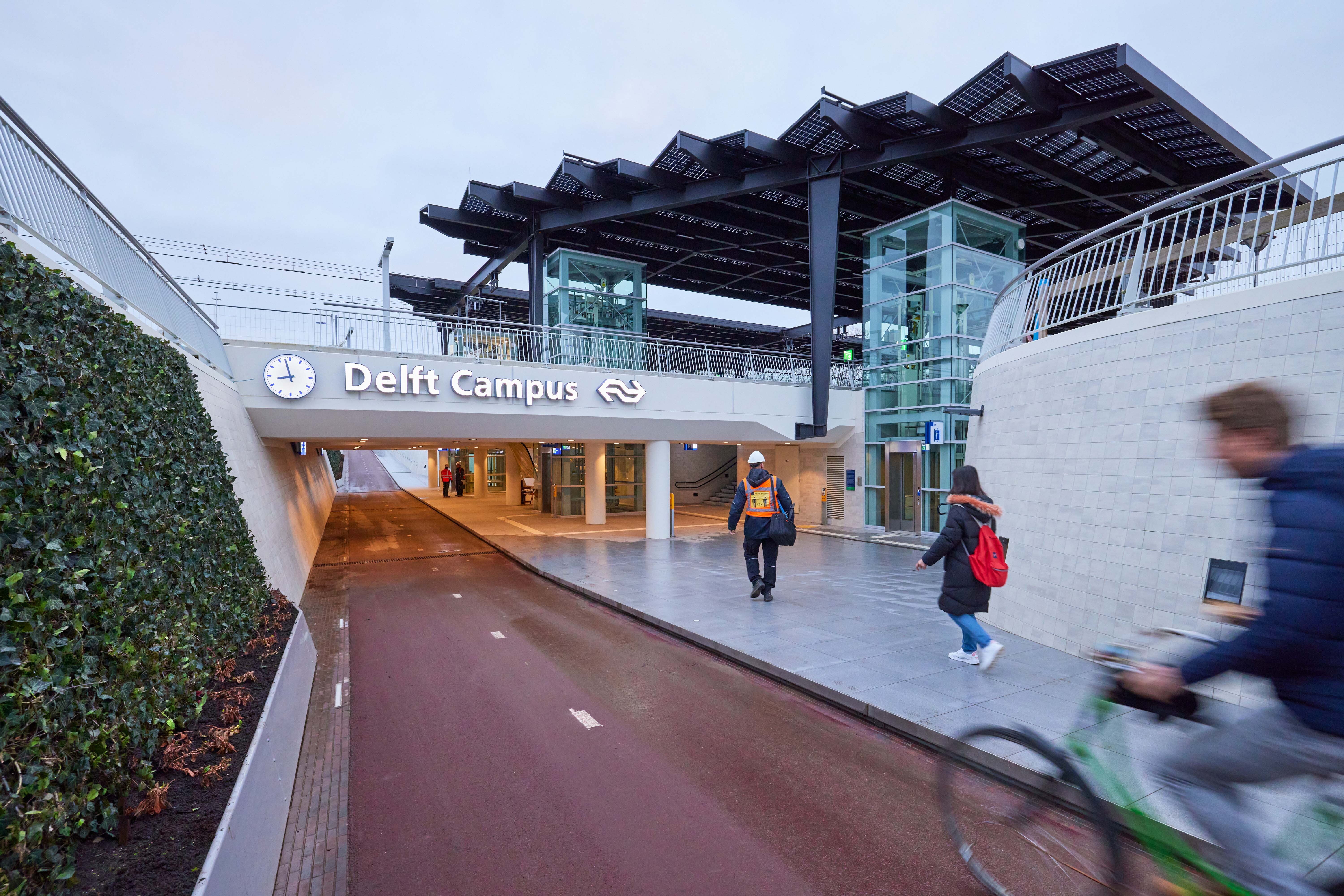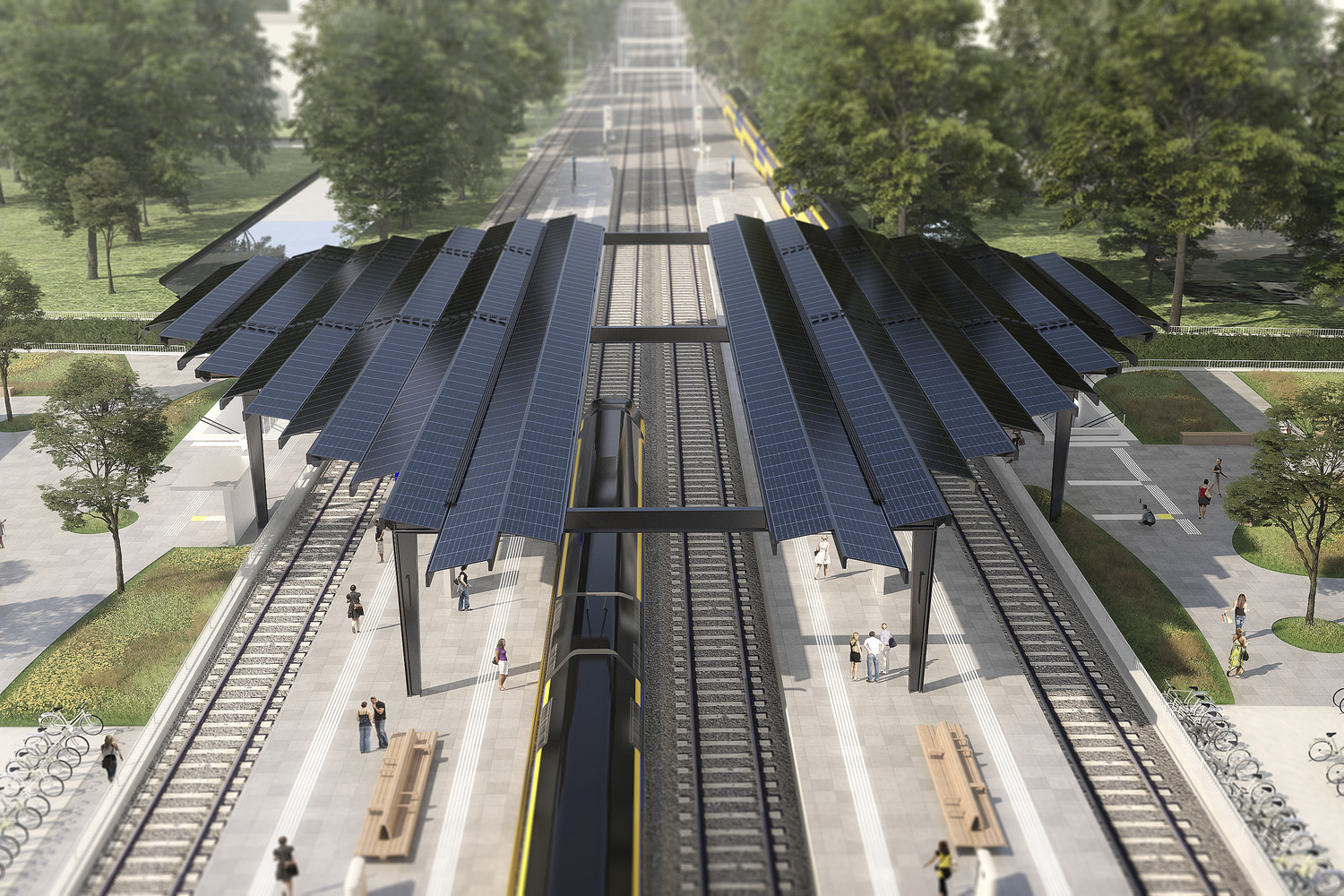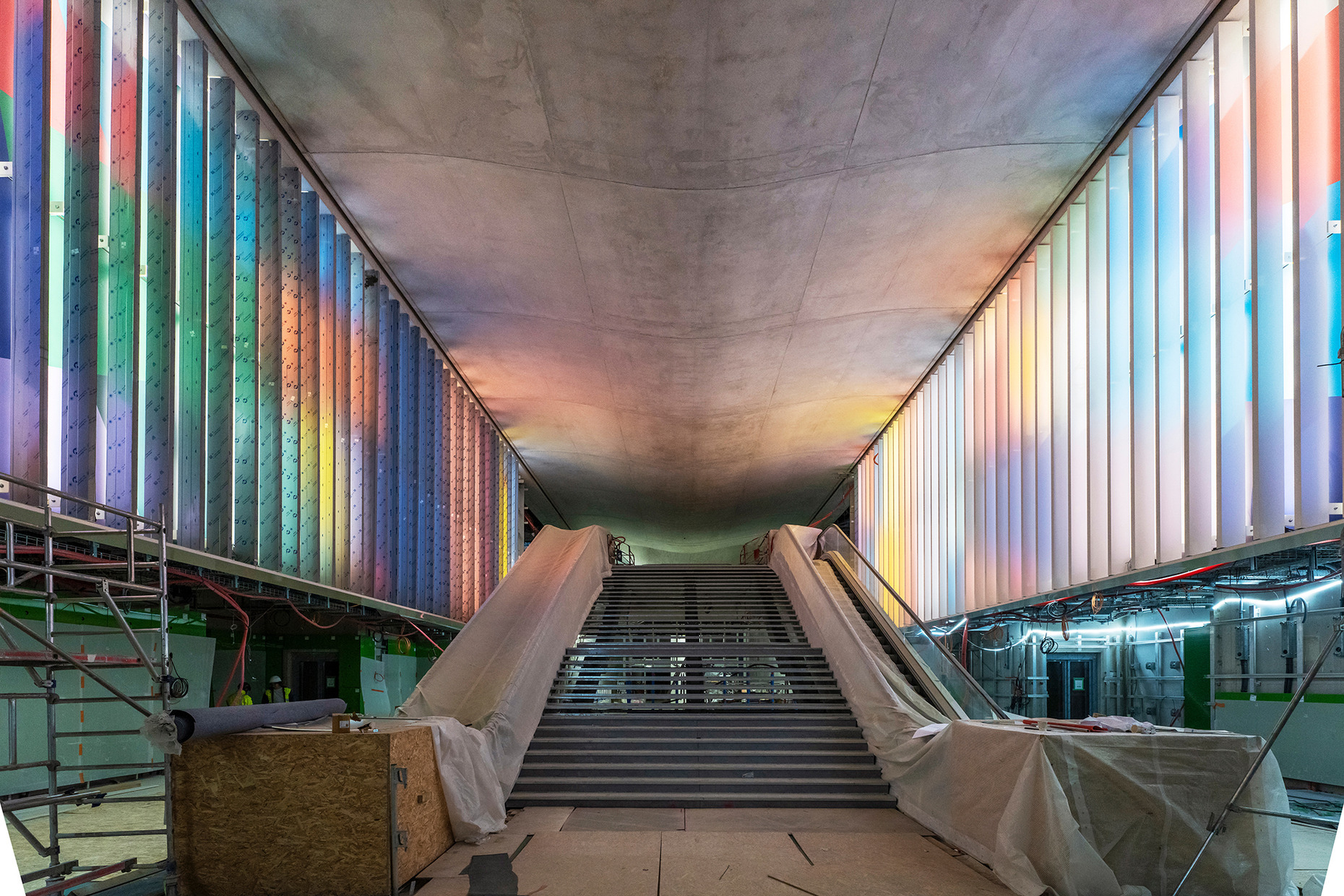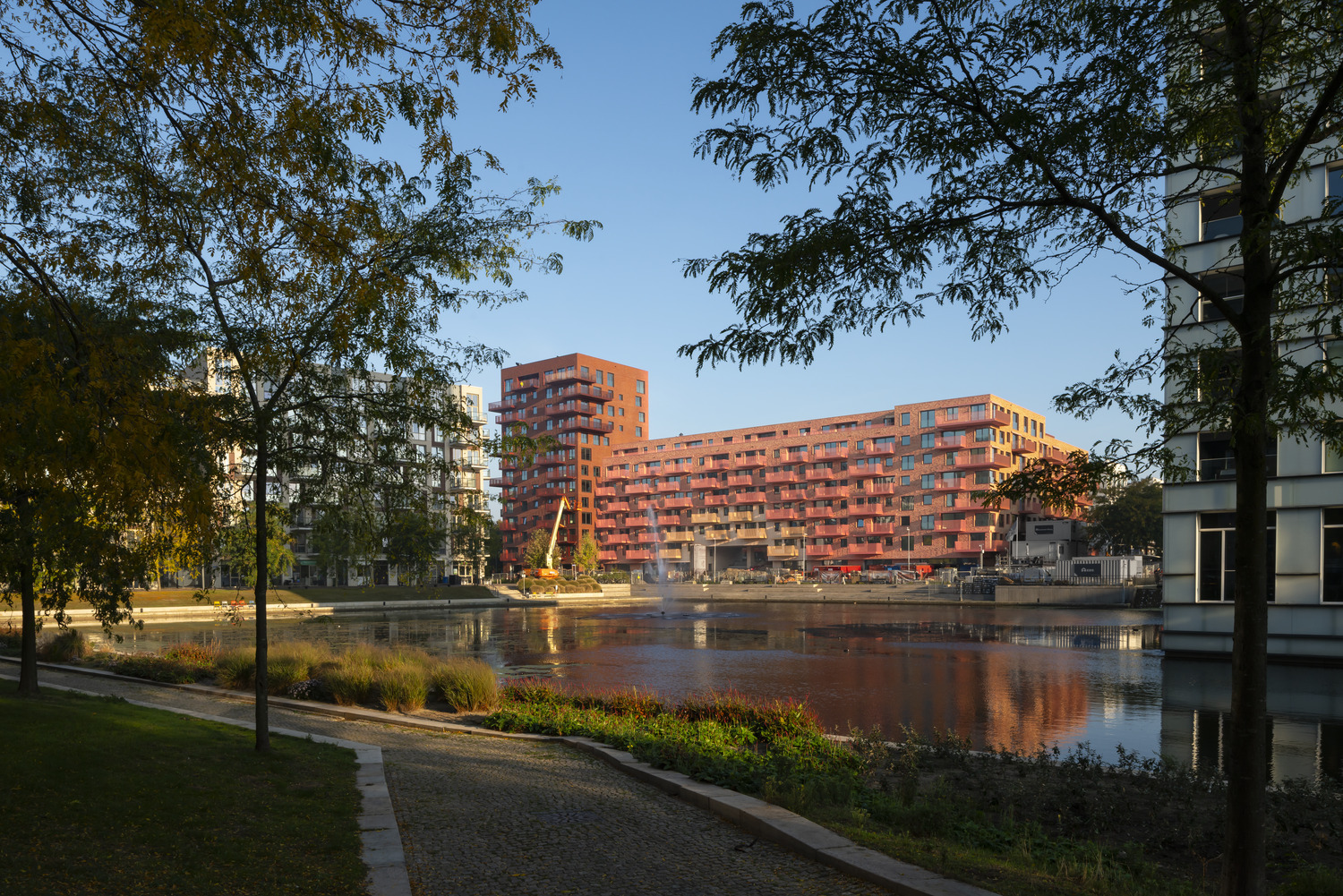Station Delft Campus, the first energy-neutral station in the Netherlands, is now in use!

Thanks to an innovative canopy, station Delft Campus (previously Delft South) is the first completely energy neutral train station in the Netherlands. Its batlike structure takes inspiration from the high-tech world of stealth technology and from biomimicry, where manmade constructions imitate nature.
Benthem Crouwel Architects designed the new station in a collaboration with Royal HaskoningDHV and Witteveen+Bos, made possible by the high ambitions of ProRail, TU Delft and the municipality of Delft. The execution and engineering was done by Strukton.
INNOVATIVE DESIGN
All of the Delft station facilities such as elevators, the announcement system, ticket machines and lighting, operate on energy supplied by a highly innovative roof. The roof can generate so much electricity (equivalent to the annual consumption of 68 households) due to the unique design: instead of the usual roof with solar panels on top, Benthem Crouwel Architects created a canopy that is made entirely out of these panels.
A BAT LIKE ROOF
Two large awnings span the tracks, fanning out on both sides of the platforms like giant, protective wings. The solar panels are placed in east-west direction with a 10-15 degree angle, creating a zigzag surface that is most optimal for catching the sunlight. Between the panels, narrow gutters take care of the rainwater drainage. Near the elevators a glass shutter gives access to the roof, making it easy to clean and maintain the canopy. The roof not only provides the station with all the energy it needs: the shiny black canopy is also a striking landmark that offers shelter to the waiting passengers.
A SAFE AND LIGHT BIKE TUNNEL
A bicycle and pedestrian tunnel underpasses the railway to connect the west and east side of the station. This tunnel is designed as a reception area, with stairs and lifts that lead to the platforms. Various design solutions ensure that as much daylight as possible enters the tunnel. For example, the walls of the tunnel are placed at an angle of 15 degrees, allowing daylight to reach far into the tunnel and through transparent lifts, daylight falls into the tunnel from the platform. By avoiding right angles in the tunnel and rounding the walls of the stairs and elevator accesses, we create a safe tunnel with maximum visibility.
The wall on the east side of the tunnel is covered with greenery, which counteracts graffiti and gives a pleasant, green accent to the station environment.



